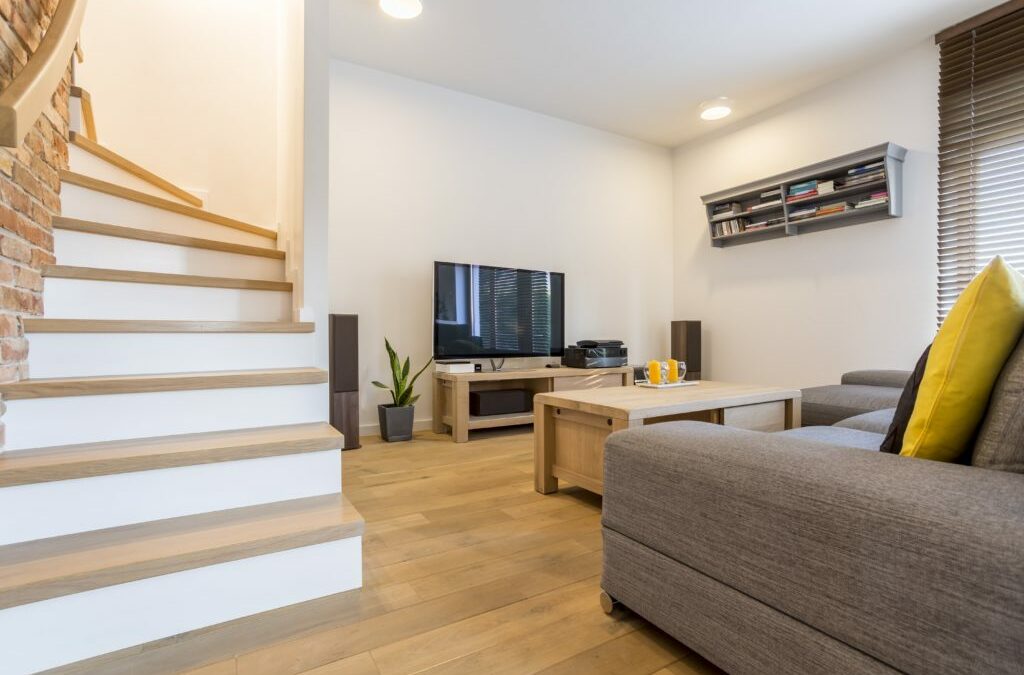The return on investment for finishing your basement is about 70 percent, according to Remodeling Magazine. Besides the financial return, the kids have a place to hang out and you have a place to sit and watch television, a new guest room, or a place to finally pursue your hobby. All of this is ideal, but have you considered the heating and cooling needs and components for this finished space? Fortunately, the cooling and heating of your finished basement is not difficult and may be the easiest consideration of the entire remodeling project!
WHERE TO PLACE FURNACES, AIR HANDLERS, AND HVAC COMPONENTS
When you created the floor plan to finish your basement, did you make plans to consider whether or not to enclose existing heating and cooling components? Often, the basement is where HVAC components, air handlers, and furnaces are housed. For aesthetic purposes putting these into small closets or tucking them away into existing utility or mechanical rooms are ideal measures to consider. Dependent upon the building codes within your community, these areas will need to be properly ventilated or accessible per code requirements, especially if dealing with gas furnaces or gas appliances. Future inspections, repairs, and replacements also dictate that these areas are built where technicians can easily access to make any needed adjustments.
EXTENDING EXISTING HVAC SYSTEMS
When adding final touches to your finished basement project, consider whether or not your existing unit has the capacity to support the additional square footage that has been added to your home’s footprint. If you are unsure of the specifications that your HVAC can support, a qualified HVAC technician can evaluate your system and determine if it will be effective for the additional heating and cooling of the area. The technician can inform you if your system will be capable enough to support the various factors that affect finished basements, especially if your basement tends to be cooler due to the location of it in your home.
ADDING ONTO EXISTING HVAC SYSTEM FOR THE BASEMENT
Quite commonly homeowners choose to expand existing HVAC systems with additional duct work which connects to units already in place. If this is the option that is chosen, all that remains is to add a few vents into the basement. This method is simple and increases the value of your home while remaining the most efficient.
STANDALONE HEATERS AND SMALL AIR CONDITIONING UNITS
An easy option for your basement is to purchase standalone heating units that can tap into existing duct work. These heaters are less expensive and do not require additions to existing HVAC units. The requirements for this are to cut a hole into existing structures so that they can be properly ventilated to the outdoors. This is a simple procedure, and if planned properly does not require much additional work, especially if you work this into your floor plans prior to finishing your basement. If adding a hole into a wall seems too much, you can simply purchase a large room electric heater, or window cooing unit. These can simply be plugged into the walls in any room. These heaters and coolers can often regulate temperatures in large areas, are often quiet, and have built-in thermostats. This may not be the best method for heating or cooling, as often these units may not reach into the entirety of your finished basement. Size of heater, air conditioner, and square footage need to be considered, and again, this is something a qualified HVAC technician can assist help determine.
CITY HEAT AND AIR CONDITIONING OFFERS SOLUTIONS FOR YOUR HVAC DESIGN
Whether or not your finished basement is complete or simply a floor plan is in your hands, we can help you assess the best way to keep your new area properly heated and cooled all year long. Our service technicians are available to discuss with you the best options for your basement today. Reach out via phone at 865-938-1005 or online today!

